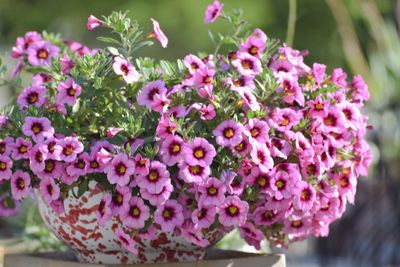Million Bells Not Flowering – Poor Growing Conditions
One reason you may be seeing no flowers on Calibrachoa is that your plants are missing some important growing conditions. Inadequate sunlight, for instance, is a common reason they will stop blooming. Make sure you plant million bells where they will get day-long sun. Your million bells plants also need warmth. This is especially true in the spring. Make sure your plants are in a spot where they will be warm and get sunlight. This will help them begin to produce abundant blooms. In the height of summer, the opposite may be true and your plants may get too hot. Make sure they get enough water, but don’t let the soil get soggy.
Getting Calibrachoa to Bloom Requires the Right Fertilizer
The right fertilizer balance can promote strong flowering on million bells. A 20-10-20 fertilizer that has a slow release mechanism is ideal. Use this every other week to promote flower growth. If you’ve been using a fertilizer with too much nitrogen, this can cause poor flower development. Nitrogen will promote good leaf growth, but it may restrict blooming. The addition of high phosphorus fertilizer, or bone meal, can help offset this.
Other Reasons for Million Bells Not Blooming
If your calibrachoa won’t flower and you’re already sure the plants have adequate sunlight and nutrients, take a look at your soil. The pH should be close to neutral or a little bit acidic. The soil should also drain well. If you have soil that isn’t draining and the roots get soggy, this can cause rot and disease but will also suspend or limit blooming. When watering, be sure to let the soil dry out in between to avoid soggy soil. If you have struggled to grow Calibrachoa in beds in the garden, try growing them in containers instead. This allows you to amend the soil and control water. It also allows you to chase the sun if your plants are failing to bloom because of shade.
